
by [email protected] | Mar 19, 2017 | Shotokan Kata, Video
Heian Godan – Important Points and Bunkai
Karrinyup Karate Club – 2 Nerita Way – Stirling Karate
www.karinyupkarate.com.au
Heian Godan is the 5th and last kata in the Heian series and has 23 counts. It is perhaps the most athletic of the Heian series and visually very exciting. This kata employs movements, techniques and concepts that challenge the skills of the karateka.
The contrast between fast and slow is stressed in Heian Godan and the karateka is put to the test by performing the movements, including a jump, with speed and balance.
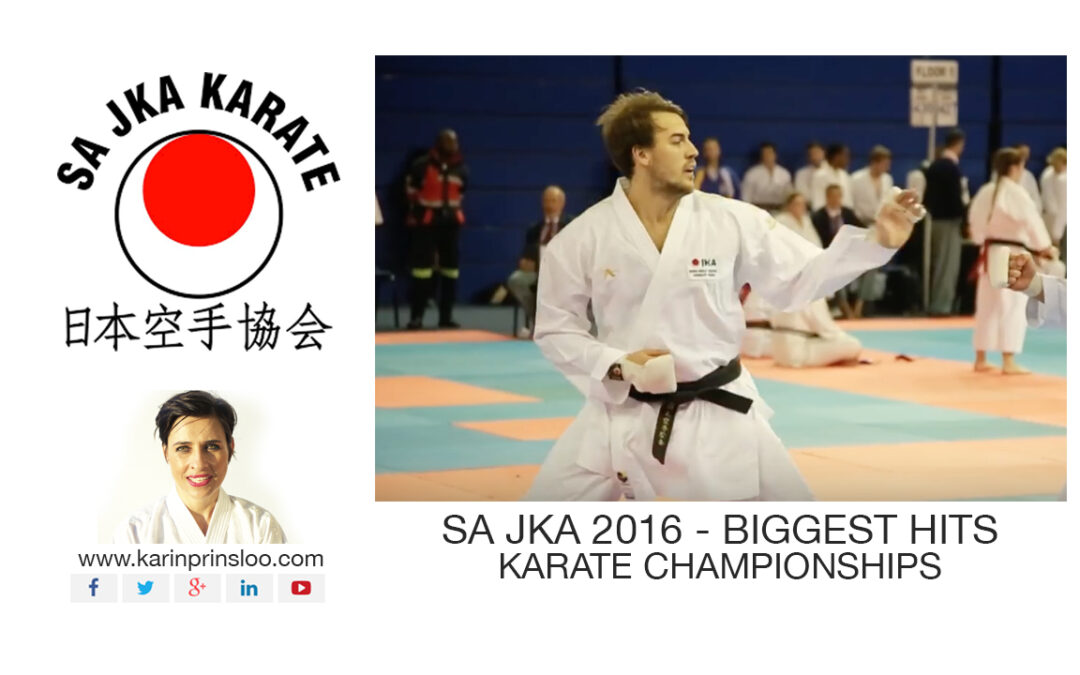
by [email protected] | Jan 10, 2017 | Tournaments
SAJKA Championships 2016 Kumite
Here are the biggest hits from 2016 SA JKA National Championships. This is always a well-organized prestigious event with around 3 000 entries taking place at the Standard Bank Arena in Johannesburg. Young, old, junior and senior compete with great spirit.
The Essence of SA JKA Shotokan Karate
JKA Shotokan is symbolised by two circles: a large circle representing the sky against which is a smaller red circle, representing the sun, is superimposed.
SOUND MIND / GOOD TECHNIQUE
Like the two interacting circles which represent JKA Shotokan Karate, JKA Shotokan Karate has developed and continued to grow into two crucial factors, namely:
Sound Mind
Good Technique
As Nakayama Sensei (Instructor) once told the writer when he asked him why the Five Maxims of Karate are important, he answered:
Self-defence is not only a physical thing. Sound mental strategies and attitudes are of far greater importance when it comes to protecing once’s self, one’s family and one’s nation. For example it is hard to hit somebody who offers you genuine respect (the 4th maximums)
www.karate.co.za
www.stirlingkarate.com.au
www.karinprinsloo.com
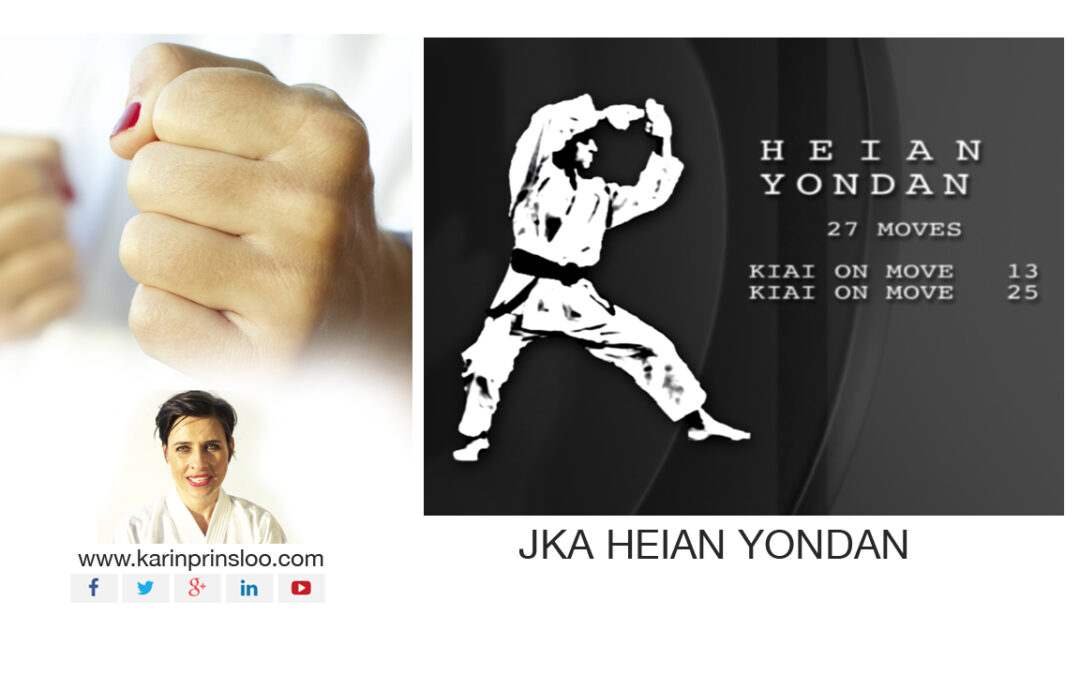
by [email protected] | Sep 12, 2016 | Uncategorised
Heian Yondan
Karate Karrinyup – 2 Nerita Way – Stirling Karate
www.stirlingkarate.com.au
The fourth level Heian has 27 counts and has many similarities to Heian Nidan. The kata’s primary stance is kokutsu-dachi (back stance), but students first learning this kata must also contend with the new kosa-dachi, a cross stance that is quite awkward for most karateka. H4 introduces the student to many new techniques such as kosa-uke, shuto-uchi, kakiwake-uke, mae-empi, and hiza-tsuchi. To perform Heian Yondan also has more kicks (5) than the other Heian kata. Slow moves must also be mastered in this kata. Much of Heian Yondan involves double-hand techniques, with morote-uke (double-hand block) occurring more than any other technique. Obviously, morote-uke was held in high regard during this kata’s creation. #jka #sajka #pinetownjka #kznjka #karinprinsloo #kata #bunkai #shotokan#stacyurger #greenbelt #karate
References: Stacy Unger
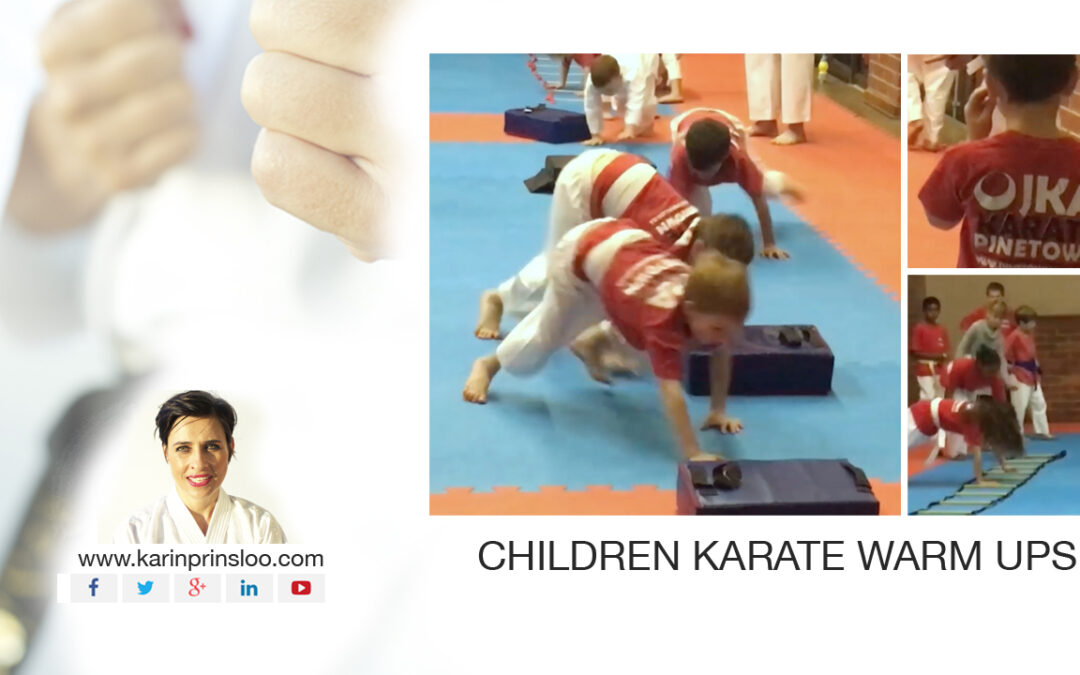
by [email protected] | Aug 20, 2016 | Karate Kids, Video
Karrinyup Karate – 2 Nerita Way – Stirling Karate
Karate warmup for children aiding in development.
www.stirlingkarate.com.au
To be able to teach young children karate, the instructors will need to understand something about child development and structure the classes in such a way as to accommodate, compliment and reinforce this.
A good warm up can be used to address a lot of these important aspects.
The following needs to be taken into consideration:
Physical Development 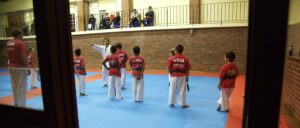
Design warm ups for children not only for preparing the body for karate, but to improve skills such as coordination, agility, speed, power, core strength and flexibility.
Intellectual Development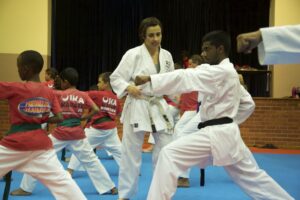
The young child’s mind is like sponge when it comes to soaking up information. They love learning new things. Remembering sequences, patterns and following instructions stimulates intellectual development. E.g. Performing the ladder drills while the line is moving fast, enhances focus and concentration.
Emotional Development 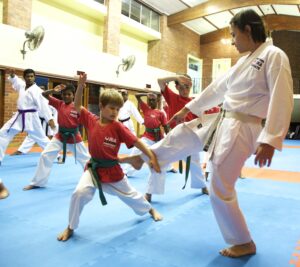
Young children relates better to “feel” rather than “reason”. Exercises must “feel” like fun to do. They still will be developing their understanding of feelings. This is a vitally important skill which will aid them in eventually becoming well-balanced adults. Instructors should show constant support and offer plenty of reassurance to the children, helping them to develop their confidence and sense of self.
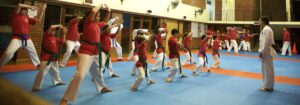
Social Development
Any form of group learning or exercise is a “social experience”, wherein the young child will not only be learning the subject being taught, but also certain aspects of interpersonal skills and teamwork. This is where they learn about responsibility, discipline and good manners. To ”wait their turn” and use “please” and “thank you” (and “Oss”) etc. They will also learn about the appreciation of law and order.
In conclusion: Young children has energy, a short attention span, learn quickly and love games. This means train in a safe environment, short (30/45min), focus on “doing”, plenty variety and must be fun. Design and pre-plan your warm-ups around these aspects and great results will show..
References:
Prof. J R Lee-Barron PhD FIMAS
President, Institute of Martial Arts and Sciences
Dean, Faculty of Martial Arts
www.institute-of-martialarts-and-sciences.com
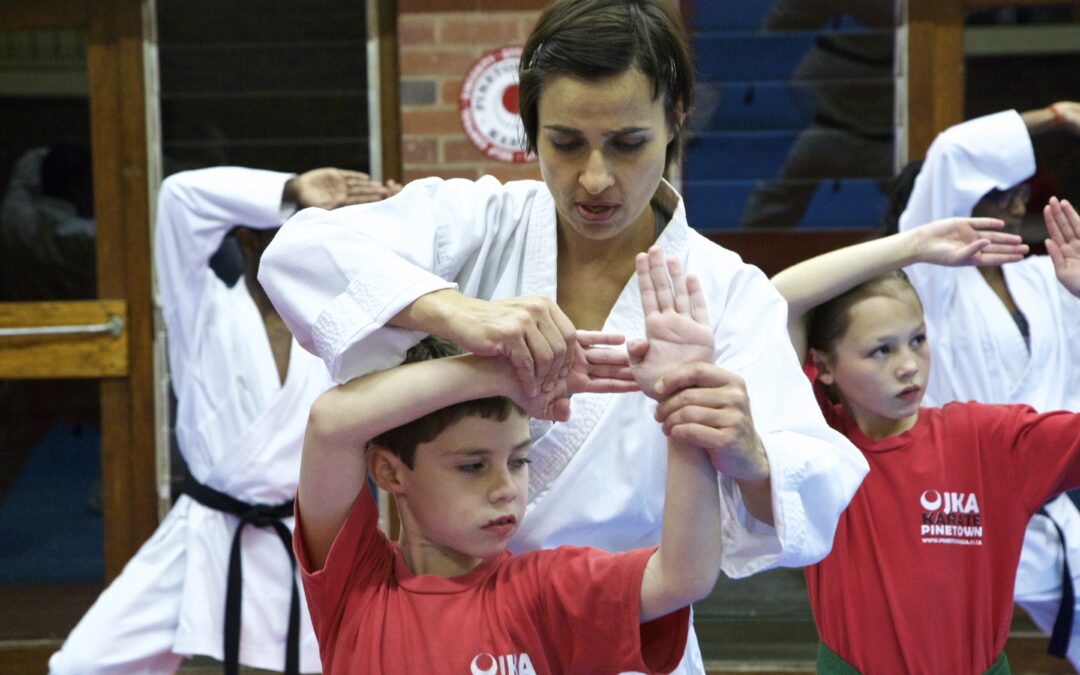
by [email protected] | Jun 15, 2016 | Articles
To teach is to learn.. 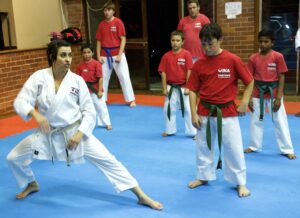
Its true. Ask anyone that teaches karate.
www.stirlingkarate.com.au
Karrinyup Karate – 2 Nerita Way – Stirling Karate.
Like well known karate blogger, Jessie said, “To teach is to learn twice. When you teach something to others you are forced to rethink your understanding of it.”
-
Einstein said: “If you can’t explain it to a 5 year old, you don’t understand it well enough”
Karate provides a lot of mental and intellectual stimulation over and above the physical benefits. To have a deeper understanding of karate technique will most certainly add to your enjoyment of the art. Teaching karate will force you to explain why and how techniques were designed to work, especially when a 6 year old puts you on the spot!
-
I have seen the benefits of seniors teaching in our dojo over the last 20 years. It is part of our dojo culture to 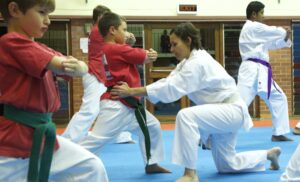 teach at least once a
teach at least once a 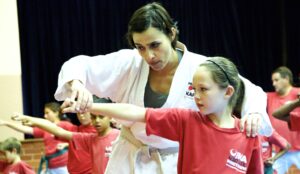 week when you receive your shodan.
week when you receive your shodan.
This is what it’s achieving:
- Young adults (and older ones) learning to take responsibility, build self esteem, become leaders and give back.
- Learning twice, re think karate. Remembering and executing karate better and become better karate-ka.
- Establishing a culture of friendship and caring for fellow dojo members which builds camaraderie and spirit.
I would love to know what you learn from teaching karate in the comments section below. What do you learn from teaching karate?
The Blog of Jesse Enkamp – Karate Nerd™ www.karatebyjesse.com
Pinetown JKA Karate Institute www.pinetownjka.co.za











 teach at least once a
teach at least once a  week when you receive your shodan.
week when you receive your shodan.